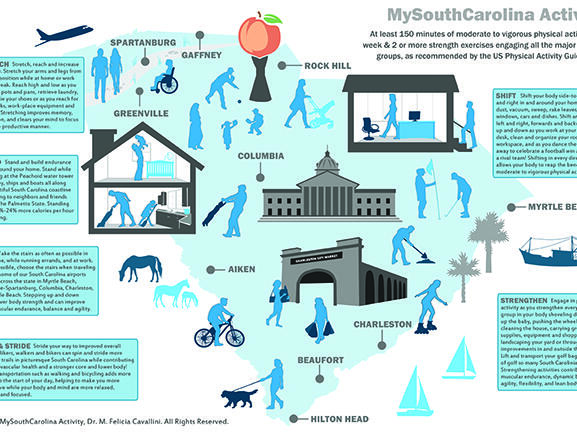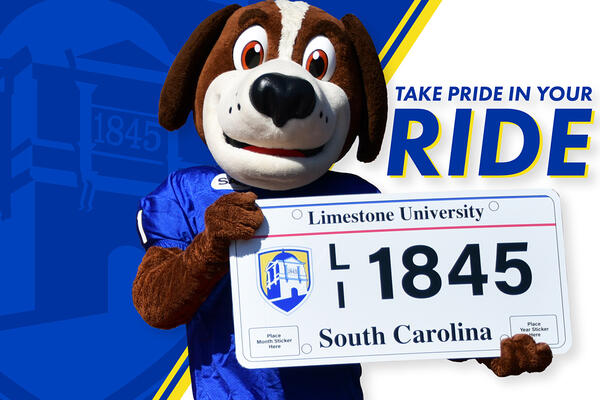November 4th, 2019
Limestone's Dr. Felicia Cavallini Has Research Published In Health Journal

Limestone College Professor of Physical Education, and a recipient of a Fulbright Scholar Grant, Dr. Felicia Cavallini recently had a research article published in the American Journal of Public Health Research.
Cavallini, along with Dr. David J. Dyck from the University of Guelph, published the mini-review “Fostering a Culture of Lifestyle Physical Activity that is Relatable for All Individuals and Communities to Embrace” which had a community-centered focus. In the article, Cavallini’s “MyGaffney,” “MyGuelph,” “MySouthCarolina,” and “MyAirport” activities are featured.
The American Journal of Public Health Research is a peer-reviewed, open access journal in the field of public health science. The aim of the journal is to stimulate debate and dissemination of knowledge in the public health field in order to improve efficacy, effectiveness and efficiency of public health interventions to improve health outcomes of populations.
The research by Cavallini and Dyck explores how communities can achieve the recommended amount of daily physical activity without stepping foot into a gym.
“Built facilities, pathways, and bike lanes that encourage active transportation, the physical determinants of a neighborhood environment and the availability of green space all play an important role in the rise of community physical activity levels,” Cavallini said. “Neighborhoods with higher reported levels of physical activity through active transportation – particularly walking and biking – tend to be safer, aesthetically pleasing, and include sidewalks and/or shorter city blocks that connect to more residential and commercial business areas.”
The research by Cavallini and Dyck explains that more physical activity perspectives should reflect moderate to vigorous daily household tasks, everyday jobs, active transportation, errands, and worksite responsibilities relatable in various community and public settings, as demonstrated in the “MyActivity” graphics.
“The culture, physical environment, and physical activity promotional efforts within a community can have an enormous impact on the physical activity buy-in from the public,” Cavallini explained. “Populations need support and education to understand that lifestyle physical activity is a viable way to meet the physical activity guidelines. As a result, more promotional actions need to reflect day-to-day living with the overarching goal of incorporating lifestyle physical activity fully and seamlessly into the fabric of our culture for the betterment of society.”
The article can be found at here.
Following her 11-month Fulbright Scholar Visiting Research Chair Grant at the University of Guelph in Guelph, Ontario, Canada, Cavallini and her research team created graphics to represent their findings. The graphics reflected the data gained from 13 diverse focus groups held during Cavallini’s time in Canada. The “MyHouse Activity” and “MyWork Activity” graphics were then placed in all the buildings on the Limestone College campus. The Radiology Oncology Department at the Gibbs Cancer Center in Spartanburg has the signage in all of its examination rooms, and the University of Guelph is using them as well.
The United States Physical Activity Guidelines recommend that individuals participate in at least 150 minutes of physical activity per week at home and at work, along with two or more strength exercises that engage all major muscle groups. Cavallini’s and Dyck’s research is reflected in graphics which demonstrate how to meet those guidelines within a communal space.
Cavallini was awarded the prestigious, internationally distinguished Fulbright U.S. Scholar Grant for 2014-2015 as a Visiting Research Chair in the Human Health and Nutritional Sciences Department at the University of Guelph. Cavallini taught and conducted research in collaboration with the faculty and serves as an ambassador to increase mutual understanding between the people of the United States and Canada.



